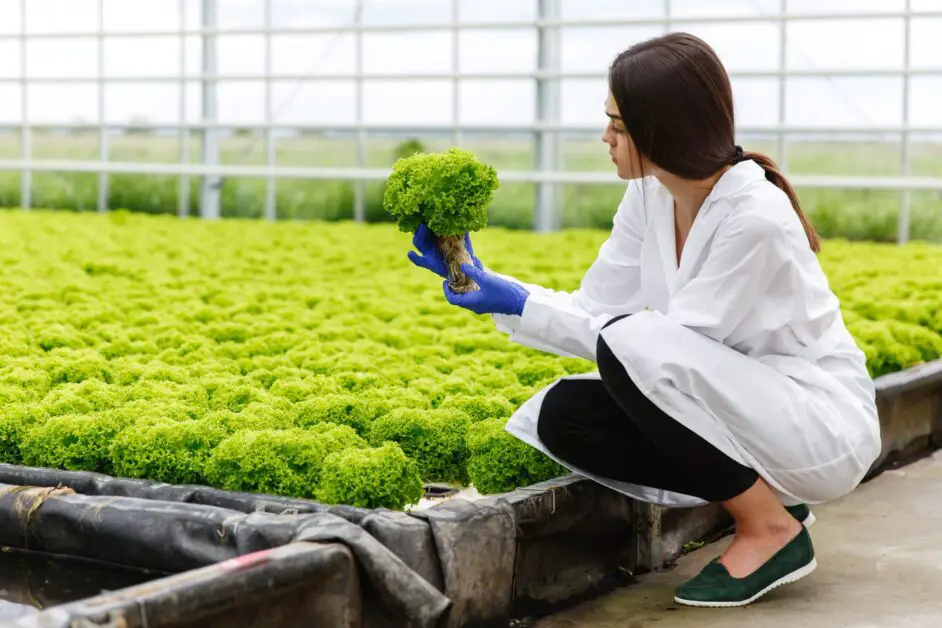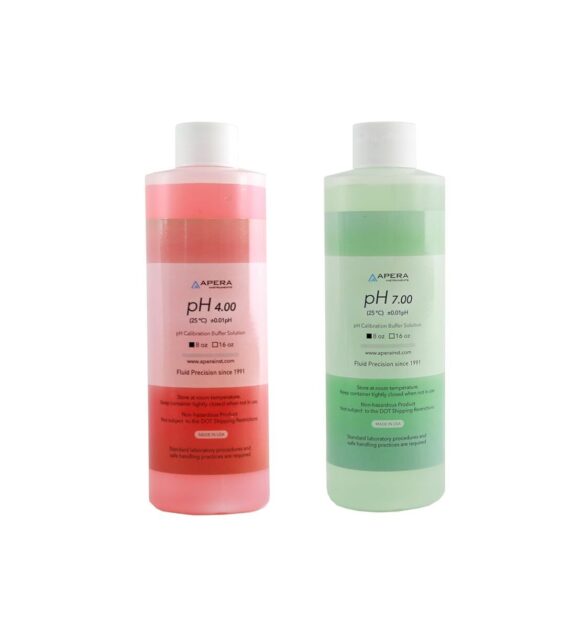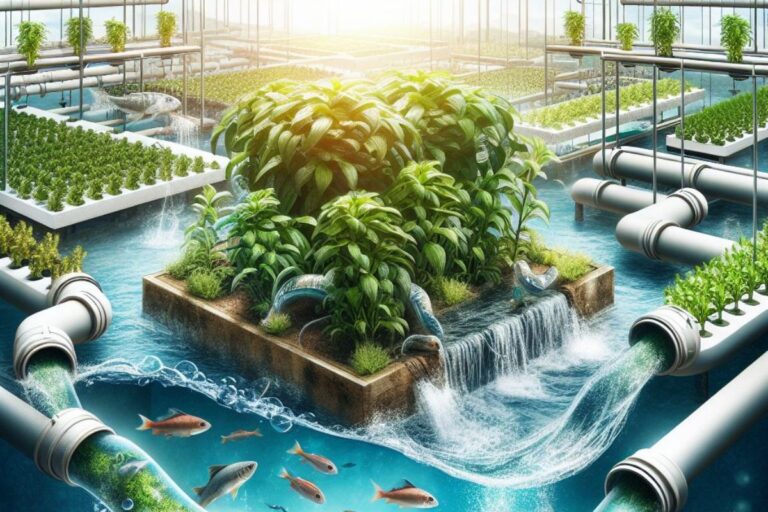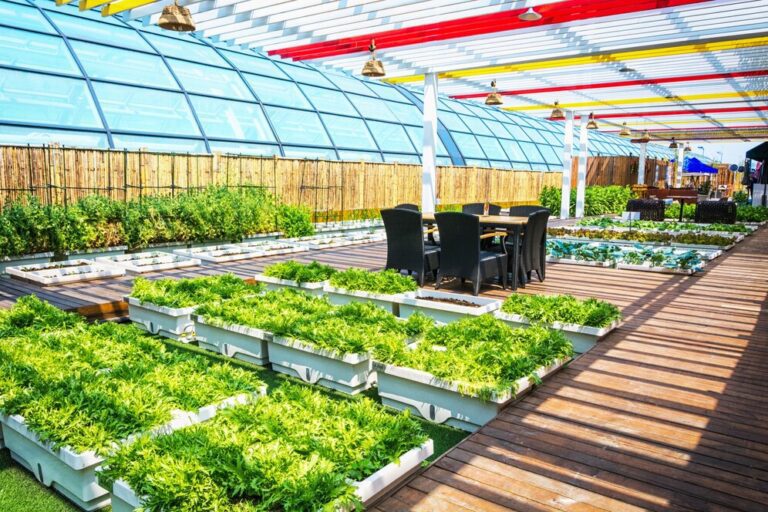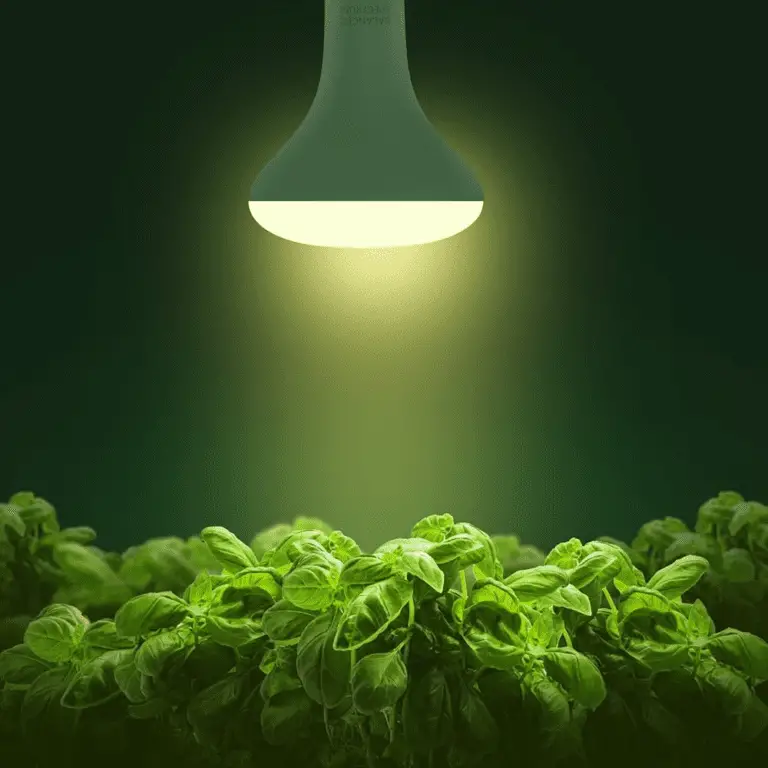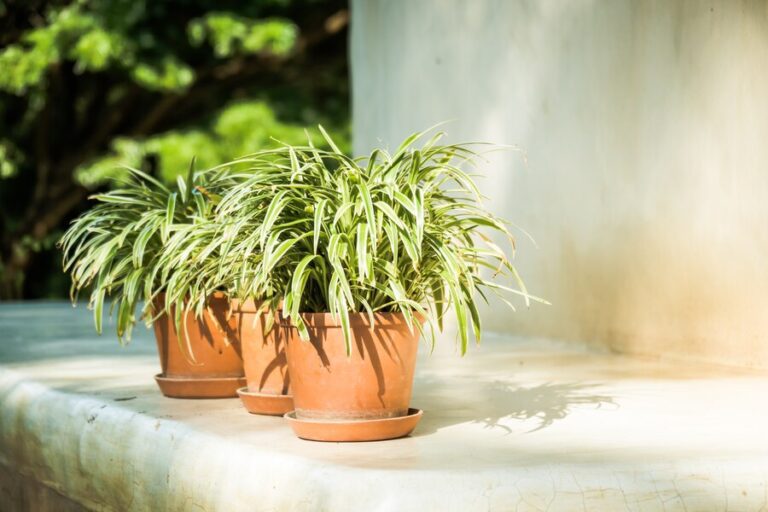Indoor Hydroponics: How to Make Your Own Nutrient Solution
Curious about indoor hydroponics but unsure where to start? You’re not alone. With the rise in urban living and a growing desire for fresh, homegrown produce, indoor hydroponic gardening has become increasingly popular. But before you dive in, there’s one essential component you’ll need to master: the nutrient solution. What if I told you that making your own solution is not only easy but also cost-effective?
Yes, you heard it right. By harnessing the power of simple ingredients and a dash of know-how, you can create a nutrient solution tailored to your plants’ needs, all from the comfort of your own home. Ready to unlock the secrets of indoor hydroponics? Let’s get started.
Table of Contents
The Benefits of Indoor Hydroponics Systems
Indoor hydroponics systems offer a multitude of benefits for gardening enthusiasts.
- Year-Round Growing:
- Overcome Weather Limitations: Grow plants regardless of outdoor conditions.
- Controlled Environment: Maintain optimal temperature, light, and moisture levels for accelerated growth.
- Pest and Disease Control:
- Soil-Free Environment: Eliminate soil-borne pests and diseases.
- Reduced Risk: Prevent root rot, fungal infections, and weed infestation without harmful chemicals.
- Precision Nutrient Delivery:
- Targeted Nutrition: Control nutrient distribution for healthier plants.
- Optimal Development: Promote higher yields and superior crop quality with precise nutrient management.
- Water Efficiency:
- Reduced Water Usage: Utilize recirculating systems for sustainable gardening.
- Resource Conservation: Conserve water, making hydroponics ideal for regions with water scarcity or drought.
Overall, indoor hydroponics systems offer a range of advantages that make them an appealing option for gardening enthusiasts. From year-round cultivation to pest and disease control, precise nutrient delivery, and water efficiency, hydroponics provides a sustainable and high-yielding solution for indoor gardening.
Understanding the Role of Nutrient Solutions in Hydroponics
Nutrient solutions play a crucial role in hydroponics, providing essential elements for plant growth and development. Unlike traditional soil-based gardening, where plants acquire nutrients from the surrounding soil, hydroponics relies on nutrient solutions to deliver all the necessary elements directly to the plant roots. These solutions are carefully formulated to meet the specific requirements of each crop, ensuring optimal nutrition and maximizing growth potential.
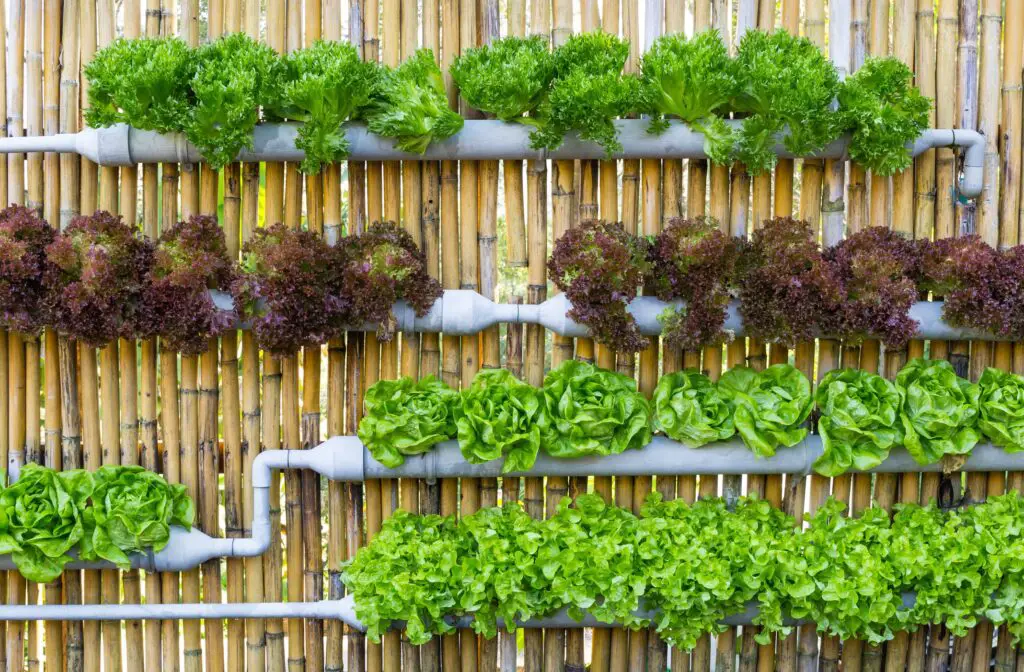
- Macronutrients:
- Nitrogen (N): Essential for leaf growth, protein synthesis, and overall plant vigor.
- Phosphorus (P): Crucial for root development, energy transfer, and flower formation.
- Potassium (K): Promotes disease resistance, water regulation, and fruit production (NPK ratio).
- Micronutrients:
- Iron (Fe): Vital for chlorophyll production and photosynthesis.
- Manganese (Mn): Involved in enzyme activation and antioxidant defense.
- Zinc (Zn): Necessary for hormone regulation and protein synthesis.
- Balanced Solutions:
- Nutrient solutions provide these elements in soluble form directly to plant roots.
- Customizable to suit specific plant varieties and growth stages.
- Efficient nutrient uptake due to precise proportions and absence of soil competition.
- Fertilizer Programs vs. Recipes:
- Fertilizer Programs:
- Offered by companies (e.g., Hydro-Gardens).
- Use complete fertilizers supplemented with macronutrients.
- Easy to use but limited adjustments for individual nutrients.
- May not account for existing nutrients in water sources.
- Nutrient Solution Recipes:
- Specific to crops (e.g., Modified Sonneveld Solution).
- Contain precise amounts of each nutrient.
- Growers choose fertilizers based on recipe requirements.
- Fertilizer Programs:
- Overall Importance:
- Nutrient solutions form the foundation for successful hydroponic plant cultivation.
- Tailoring nutrition ensures healthy growth and optimal yields.
Review for Nutrient Solution Calculation and Formulation for Hydroponics
I recently used “Nutrient Solution Calculation and Formulation for Hydroponics” to improve my hydroponic setup and found it to be an exceptional resource. This book provides comprehensive content that delves deeply into the science of nutrient solutions, making it ideal for those seeking precise and accurate formulas for optimal plant growth. The authors offer practical examples and real-world scenarios, which significantly enhanced my understanding of nutrient management in hydroponics.
One of the standout features of this book is its precision formulas, which have helped me achieve better yields and healthier plants in my hydroponic system. The expert insights and knowledge shared by the authors are invaluable, making it clear that this book is written by professionals in the field.
However, the technical language used throughout the book might be challenging for beginners to grasp fully. Additionally, I found the book to be somewhat lacking in visual aids, such as diagrams and illustrations, which could have made the complex concepts easier to understand. Finally, the price is on the higher side compared to other hydroponic guides, but the quality of the content justifies the cost for serious hydroponic gardeners.
Overall, “Nutrient Solution Calculation and Formulation for Hydroponics” is a must-have for anyone looking to enhance their knowledge and skills in nutrient management for hydroponic systems. Its detailed and accurate information makes it a valuable addition to any hydroponic enthusiast’s library.
- Comprehensive Content: Detailed explanations of nutrient solutions.
- Precision Formulas: Offers accurate calculations for optimal plant growth.
- Practical Examples: Real-world scenarios enhance understanding.
- Expert Insight: Written by knowledgeable authors in the field.
- Versatile Applications: Suitable for various hydroponic systems and crops.
- Technical Language: May be challenging for beginners to grasp.
- Limited Visuals: Few diagrams and illustrations to aid learning.
- Pricey: Higher cost compared to other hydroponic guides.
Essential Nutrients for Healthy Plant Growth
Plants, much like humans, have specific nutritional needs in order to thrive and achieve healthy growth. Understanding the essential nutrients required by plants is crucial for successful hydroponic gardening. These nutrients are divided into two categories: macronutrients and micronutrients.
- Macronutrients:
- Nitrogen (N): Essential for leaf and stem growth.
- Phosphorus (P): Promotes strong root development.
- Potassium (K): Supports overall plant health and disease resistance.
- Micronutrients:
- Iron (Fe), Manganese (Mn), Zinc (Zn), Copper (Cu), Boron (B), Molybdenum (Mo).
- Vital for biochemical processes like enzyme activation and photosynthesis.
- Balanced Nutrient Solutions:
- Importance of Balance: Provide all necessary macronutrients and micronutrients.
- Avoiding Deficiencies: Neglecting nutrients leads to health problems.
- Selecting Nutrient Solutions:
- Hydroponic Formulations: Choose solutions tailored for hydroponic systems.
- Ideal Nutrient Ratios: Ensure the right balance for optimal plant growth and health.
By meeting their nutritional requirements, you can create an environment where plants can flourish and produce abundant yields in the indoor hydroponic garden.
Here below table is given about the essential nutrient for plant growth and yield:
| Nutrient | Function | Source |
| Nitrogen (N) | Key component of proteins, enzymes, and chlorophyll. | Fertilizers, organic matter, legumes. |
| Phosphorus (P) | Energy transfer and storage, root development, flower and fruit formation. | Fertilizers, bone meal, rock phosphate. |
| Potassium (K) | Water regulation, enzyme activation, disease resistance. | Fertilizers, wood ash, compost. |
| Calcium (Ca) | Cell wall structure, root development, nutrient uptake. | Lime, gypsum, eggshells. |
| Magnesium (Mg) | Chlorophyll formation, photosynthesis. | Epsom salt, dolomite lime, compost. |
| Sulfur (S) | Component of amino acids and vitamins. | Sulfate-containing fertilizers, organic matter. |
| Iron (Fe) | Chlorophyll synthesis, enzyme functions. | Iron chelates, iron sulfate, compost. |
| Manganese (Mn) | Enzyme activation, photosynthesis. | Manganese sulfate, organic matter. |
| Zinc (Zn) | Enzyme activation, hormone regulation. | Zinc sulfate, organic matter. |
| Copper (Cu) | Enzyme functions, chlorophyll synthesis. | Copper sulfate, compost. |
| Molybdenum (Mo) | Nitrogen metabolism. | Molybdenum compounds, organic matter. |
Selecting the Right Nutrient Solution for Your Hydroponic System
When it comes to selecting the right nutrient solution for your hydroponic system, it is important to consider the specific needs of your plants. Different plants require different combinations and ratios of nutrients to thrive and reach their full potential. Understanding these nutrient requirements is crucial in ensuring optimal growth and yields in your hydroponic garden.
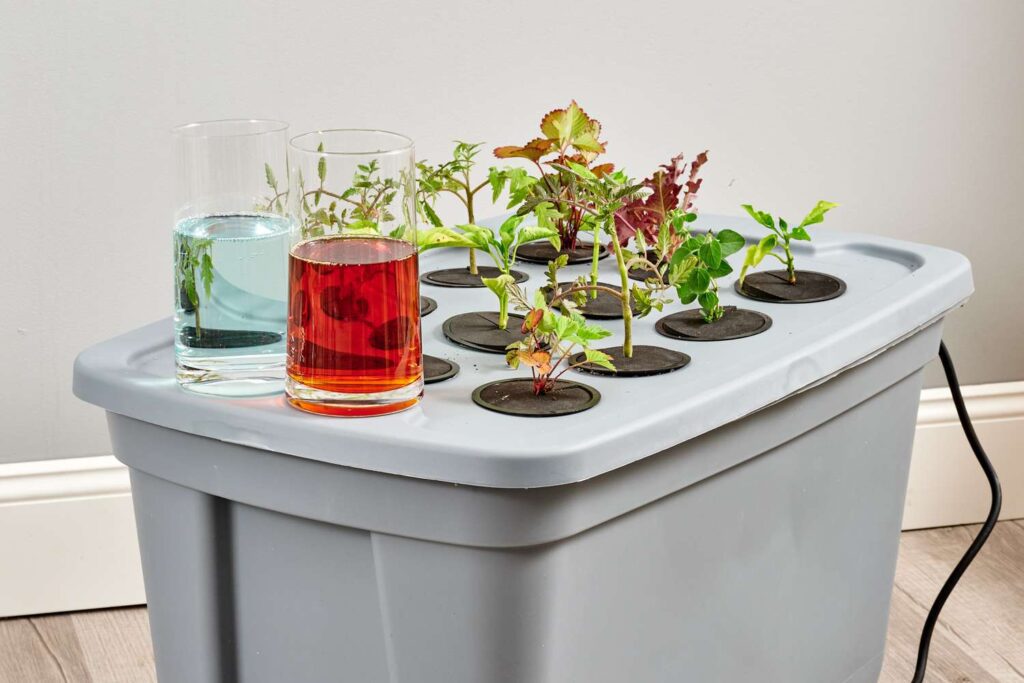
- Understanding Plant Nutrient Requirements:
- Primary Macronutrients: Nitrogen (N), Phosphorus (P), Potassium (K).
- Secondary Macronutrients: Calcium (Ca), Magnesium (Mg), Sulfur (S).
- Micronutrients: Iron (Fe), Manganese (Mn), Zinc (Zn), Copper (Cu), among others.
- Assessing Plant Needs:
- Determine Specific Requirements: Analyze the nutrient needs of your chosen plants.
- Achieving Balance: Choose a solution that provides the necessary balance of essential elements.
- Considering Nutrient Solution Forms:
- Liquid Concentrates: Easy to use and quickly absorbed, but may be more expensive and have a shorter shelf life.
- Powders and Granules: More cost-effective with a longer shelf life, but may require more preparation and dissolve slower in water.
- Making an Informed Decision:
- Weighing Advantages and Disadvantages: Consider factors such as cost, convenience, and shelf life.
- Tailoring to Specific Needs: Select a nutrient solution form that aligns with your preferences and gardening goals.
Ultimately, selecting the right nutrient solution for your hydroponic system requires careful consideration of your plant’s nutrient requirements and the form of the solution. By understanding these factors and taking them into account, you can provide your plants with the necessary nutrients to thrive and achieve optimal growth and yields in your indoor hydroponic garden.
Understanding Nutrient Ratios and Their Impact on Plant Health
Nutrient ratios play a crucial role in ensuring the overall health and growth of plants in hydroponic systems. These ratios determine the ideal proportions of essential nutrients that plants require to flourish. By understanding nutrient ratios and their impact on plant health, hydroponic gardeners can optimize their nutrient solutions to achieve optimal growth and productivity.
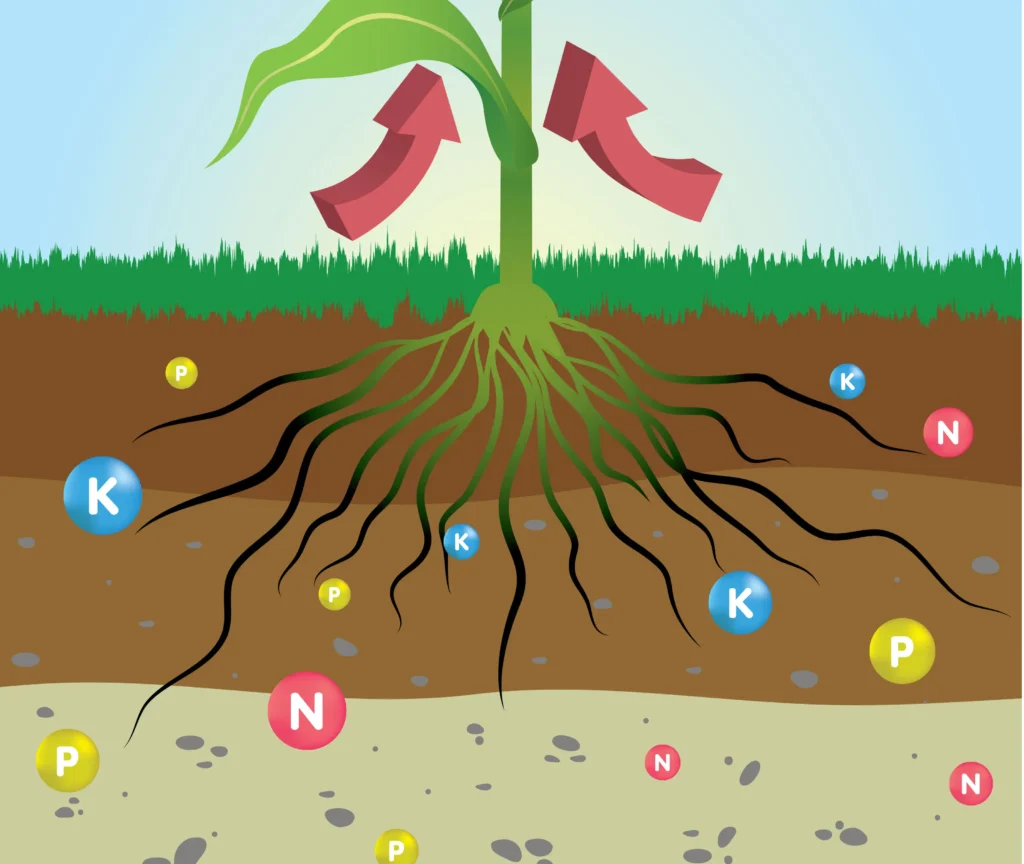
- Macronutrients:
- Nitrogen (N): Required in larger quantities.
- Essential for photosynthesis, protein synthesis, and overall growth.
- Imbalance can lead to weak stems and poor fruit development.
- Phosphorus (P):
- Crucial for root development, energy transfer, and flower formation.
- Imbalance affects overall plant vigor.
- Potassium (K):
- Promotes disease resistance, water regulation, and fruit production.
- Imbalance impacts overall health and flowering.
- Nitrogen (N): Required in larger quantities.
- Micronutrients:
- Iron (Fe):
- Vital for chlorophyll production and photosynthesis.
- Deficiency causes yellowing of leaves (chlorosis).
- Manganese (Mn):
- Involved in enzyme activation and antioxidant defense.
- Deficiency affects overall growth.
- Zinc (Zn):
- Necessary for hormone regulation and protein synthesis.
- Deficiency leads to stunted growth.
- Iron (Fe):
- Balancing Act:
- Optimal nutrient ratios ensure healthy plant development.
- Adjustments based on specific crop needs.
- Regular monitoring prevents deficiencies or toxicities.
- Overall Importance:
- Achieving the right balance supports robust growth and productivity.
In the next section, we will delve deeper into specific nutrient ratios and their implications for plant health in hydroponic systems. We will explore the ideal ratios for different plant types, growth stages, and environmental conditions. By understanding these ratios, hydroponic gardeners can make informed decisions when selecting nutrient solutions and fine-tuning their systems for maximum plant health and yield. Stay tuned for more in-depth insights into the world of nutrient ratios in hydroponics.
Mixing Your Own Nutrient Solution: Key Ingredients and Measurements
One of the advantages of hydroponic gardening is the ability to customize nutrient solutions based on the specific needs of your plants. By mixing your own nutrient solution, you have full control over the ingredients and can tailor them to optimize plant growth and health.
Macronutrients: Nitrogen, Phosphorus, Potassium.
Micronutrients: Calcium, Magnesium, Iron.
Balanced Ratios: Ensure plants receive the right balance of nutrients for optimal growth.
Tailored to Plant Needs: Consider specific requirements of different crops.
Consult Reputable Sources: Seek guidance from experts or reputable resources for ideal nutrient ratios.
Plant-Specific Guidance: Understand nutrient needs of individual plants for best results.
Importance of pH: Maintain pH levels between 5.5 and 6.5 for optimal nutrient absorption.
Monitoring and Adjustment: Regularly monitor and adjust pH levels to prevent deficiencies or toxicities.
Customized Solutions: Have control over quality and composition of the nutrients.
Tailored Growth: Optimize plant growth and health with a tailored nutrient solution.
The table shows the key aspect of mixing your own nutrient solution:
| Key Aspect | Description |
| Advantage of Hydroponic Gardening | Customization of nutrient solutions to meet specific plant needs for optimized growth and health. |
| Key Ingredients | Macronutrients (nitrogen, phosphorus, potassium), Micronutrients (calcium, magnesium, iron). |
| Proper Measurements | Crucial to ensure the right balance of nutrients for optimal plant growth. |
| Consideration for Different Crops | Plants have varying nutrient requirements; understanding ideal ratios is essential. |
| pH Adjustment | Monitoring and maintaining pH levels (5.5-6.5) for proper nutrient absorption; use of pH adjusters. |
| Consultation for Ideal Nutrient Ratios | Seek guidance from reputable resources or hydroponic experts for specific plant nutrient requirements. |
| pH Level Monitoring | Regular checks to prevent nutrient deficiencies or toxicities due to improper pH. |
| pH Adjustment Techniques | Use of pH adjusters, acids, or bases as needed to maintain optimal pH levels. |
| Complete Control over Nutrient Quality | Allows full control over nutrient composition, ensuring plant health and growth optimization. |
Exploring Different Types of Nutrient Sources for Hydroponics
In hydroponics, the nutrient solution plays a vital role in providing the essential elements for plant growth. There are various types of nutrient sources available that can be used in hydroponic systems.
- Commercially Formulated Nutrient Solutions:
- Carefully balanced with macronutrients (N, P, K) and micronutrients (Fe, Mn, Zn).
- Convenient and eliminate the need for individual nutrient mixing.
- Ensure optimal plant health and growth.
- Organic Fertilizers:
- Derived from natural sources (compost, manure, plant-based materials).
- Provide slow-release nutrients for long-term soil health.
- Not all organic fertilizers are suitable for hydroponics (watch for clogging particles or pathogens).
- Mineral Salts:
- Inorganic compounds with precise nutrient ratios.
- Highly soluble and easily absorbed by plants.
- Requires monitoring of nutrient levels and pH to prevent imbalances or deficiencies.
As an informed hydroponics gardener, it is important to explore different types of nutrient sources and select the one that aligns with your specific needs and preferences. Considering factors such as convenience, sustainability, and crop requirements will help you make an informed decision.
Techniques for Adjusting pH Levels in Nutrient Solutions
When it comes to hydroponics, maintaining the proper pH levels in your nutrient solutions is crucial for the health and growth of your plants. pH stands for “potential of hydrogen” and refers to the acidity or alkalinity of a substance. In hydroponics, the ideal pH range for most plants is between 5.5 and 6.5.
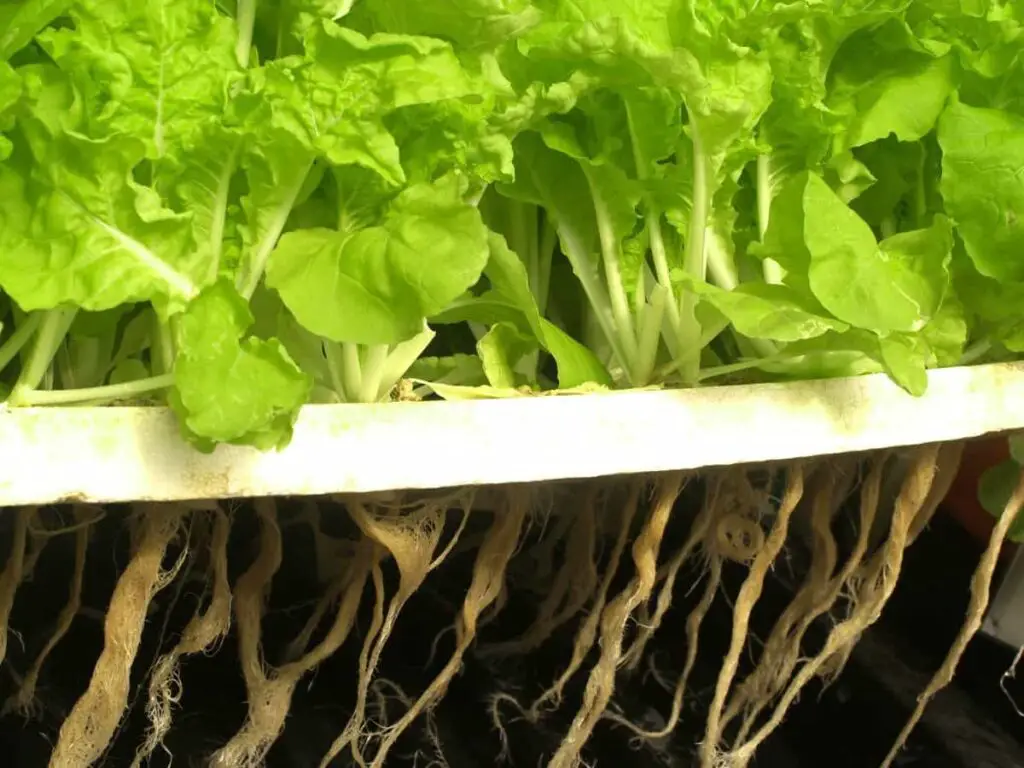
- pH Adjusters (pH Up and pH Down):
- Purpose: Increase or decrease the pH of the nutrient solution.
- Components: Typically contain phosphoric acid (pH Down) or potassium hydroxide (pH Up).
- Usage:
- Add in small increments.
- Follow manufacturer’s instructions.
- Gradual adjustments to avoid drastic pH changes.
- pH Buffers or Stabilizers:
- Purpose: Maintain a stable pH level.
- Composition: Salts that can adjust pH (either increase or decrease).
- Benefits:
- Ensures pH remains within the desired range.
- Counteracts external factors affecting solution acidity or alkalinity.
Overall, adjusting pH levels in your hydroponic system is essential for the optimal growth and development of your plants. By closely monitoring and maintaining the pH of your nutrient solutions, you can provide the ideal environment for your plants to thrive and maximize their nutrient uptake.
Review for Apera Instruments AI1113 pH Calibration Solution
I recently started using the Apera Instruments AI1113 pH Calibration Solution for my hydroponic nutrient solutions, and it has proven to be an excellent product. The solution ensures accurate calibration of my pH meter, which is crucial for maintaining the proper nutrient balance in my hydroponic system. The pre-mixed solution is extremely convenient, saving me time and effort in preparing calibration solutions.
One of the standout features is the high-quality, leak-proof polyethylene bottle, which provides reliable storage and prevents any spills. Additionally, the solution has a long shelf life, maintaining its stability and effectiveness over time, which is essential for consistent pH measurements.
However, the price is a bit higher compared to some other calibration solutions on the market. Additionally, the limited volume of the bottle means I need to purchase it more frequently, which can be a minor inconvenience. Proper storage is also necessary to ensure the solution remains effective, but this is a common requirement for most pH calibration solutions.
Overall, the Apera Instruments AI1113 pH Calibration Solution is a reliable and high-quality product that I would recommend to anyone needing precise pH measurements for their hydroponic systems. Despite the slightly higher price, the accuracy and convenience it offers make it well worth the investment.
✅ Ready-to-Use: Comes pre-mixed for convenience.
✅ High-Quality Packaging: Durable and leak-proof polyethylene bottle.
✅ Long Shelf Life: Maintains stability over extended periods.
✅ Versatile Application: Suitable for various pH meters and testers.
❌ Volume: Limited quantity may require frequent re-purchasing.
❌ Storage Requirements: Needs to be stored properly to maintain effectiveness.
Tips for Monitoring and Maintaining Nutrient Solution Quality
Monitoring and maintaining the quality of nutrient solutions is crucial for the success of your indoor hydroponics system. Regularly checking and adjusting nutrient levels ensures that your plants receive the necessary elements for healthy growth.
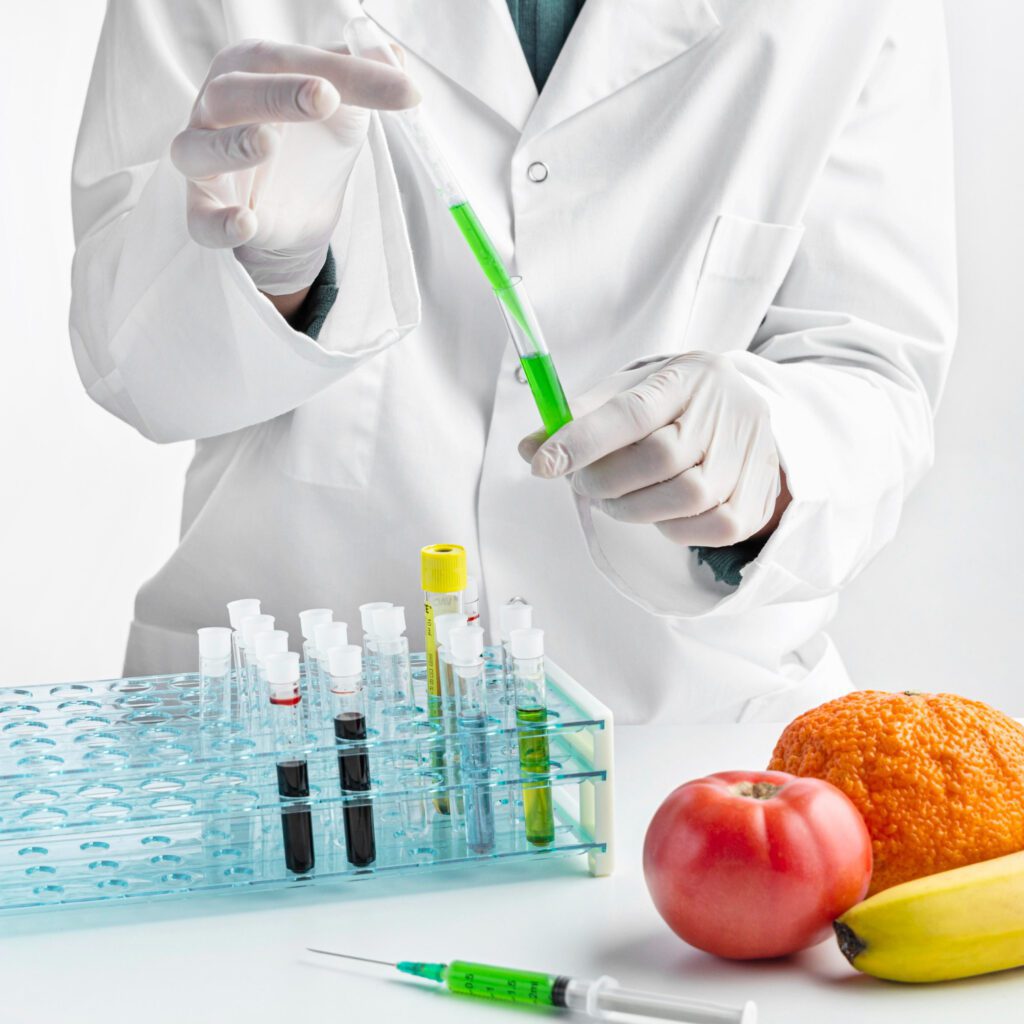
- pH Level Maintenance:
- Electrical Conductivity (EC) Monitoring:
- Understanding EC: Measures concentration of dissolved salts.
- Importance: High EC can cause imbalances, low EC may indicate deficiencies.
- Regular Measurement: Use EC meter to monitor and adjust as needed for optimal levels.
- Symptom Observation:
- Identifying Deficiencies or Toxicities: Watch for signs like leaf discoloration, stunted growth, or wilting.
- Prompt Action: Address nutrient imbalances based on observed symptoms.
- Hydroponic System Cleanliness:
- Preventing Contamination: Keep reservoir, pumps, and irrigation system debris-free.
- Algae Control: Regularly clean and sanitize system to prevent algae growth.
- Importance of Cleanliness: Prevent buildup of harmful bacteria or pathogens in the system.
By regularly monitoring and maintaining nutrient solution quality in your indoor hydroponics system, you can provide optimal growing conditions for your plants and maximize their productivity.
Troubleshooting Common Nutrient Solution Issues in Hydroponics
Maintaining a healthy nutrient solution is crucial for successful hydroponic gardening. However, even with diligent care, problems can arise. Here are some common nutrient solution issues you may encounter and how to troubleshoot them.
1. Nutrient Deficiencies: One of the most common issues in hydroponics is nutrient deficiencies, which can lead to stunted growth, yellowing leaves, or poor fruit development. The first step in troubleshooting is to identify the specific nutrient lacking in your solution. By observing the symptoms and cross-referencing them with nutrient deficiency charts, you can narrow down the potential culprits. Adjusting the nutrient solution by adding the deficient element in the correct ratio can help resolve the issue. Regular monitoring of nutrient levels and maintaining a balanced solution is key in preventing deficiencies.
2. Nutrient Imbalances: Another problem you may encounter is nutrient imbalances, where certain elements are present at excessive levels. This can cause toxicity symptoms, such as leaf burn, wilting, or even plant death. To tackle this issue, it is essential to test your nutrient solution regularly and adjust the ratios to achieve a proper balance. Diluting the solution or providing fresh water to replace some of the existing solution can also help reduce the imbalances. Remember, maintaining a consistent pH level is crucial as it can affect nutrient availability and absorption by plants.
While these are just a couple of common issues, it’s essential to remember that each hydroponic system is unique. Understanding the needs of your specific plants and being vigilant in monitoring their progress will help you identify and troubleshoot any nutrient solution problems effectively. By addressing these issues promptly, you can maintain a thriving hydroponic garden that yields healthy, vibrant plants. Next, we will delve into enhancing nutrient uptake with supplements and additives, offering you further strategies to optimize your hydroponic system’s success.
Enhancing Nutrient Uptake with Supplements and Additives
Supplements and additives can play a crucial role in enhancing nutrient uptake in indoor hydroponic systems.
- Tailored Nutrient Provision:
- Essential Elements: Provide plants with necessary nutrients for optimal growth.
- Proportional Balance: Ensure correct proportions for healthier, vigorous growth.
- Seaweed Extract:
- Micronutrient Rich: Derived from seaweed or kelp, rich in micronutrients, vitamins, and growth hormones.
- Root Stimulation: Stimulates root growth and enhances nutrient absorption.
- Immunity Boost: Enhances plant immunity, increasing resistance to diseases and pests.
- Fulvic Acid:
- Nutrient Chelation: Aids in mineral chelation, improving nutrient availability.
- Soil Improvement: Enhances soil structure, water retention, and nutrient retention.
- Growth Promotion: Creates an environment conducive to optimal plant growth and development.
- Customized Approach:
- Plant-Specific Needs: Tailor supplements and additives to match plants’ requirements and growth stages.
- Expert Guidance: Consult hydroponics experts or conduct research to select the most suitable supplements and additives.
Incorporating supplements and additives into your hydroponic system can optimize nutrient uptake and promote vibrant plant growth. Choose supplements wisely, ensuring they meet your plants’ specific needs, to maximize the benefits and foster a thriving indoor hydroponic garden.
Best Practices for Recycling and Reusing Nutrient Solutions in Indoor Hydroponics
Recycling and reusing nutrient solutions is a key practice in indoor hydroponics that not only helps to reduce waste but also contributes to sustainable gardening. By implementing best practices for nutrient solution management, you can ensure the continued health and growth of your plants while maximizing the longevity of your resources.
- Monitor pH Levels:
- Regularly check the pH of your nutrient solution using a pH meter or pH test strips.
- Aim for a pH range of 5.5 to 6.5, which is optimal for most crops.
- Adjust the pH using pH up or down solutions as needed to keep it within the recommended range.
- Balance Nutrient Concentration:
- Nutrient levels can fluctuate over time due to plant uptake and evaporation.
- Measure the electrical conductivity (EC) or total dissolved solids (TDS) of the solution.
- Adjust the EC or TDS by adding fresh water or concentrated nutrient solutions to maintain the desired nutrient balance.
- Consult Expert Recommendations:
- Different crops and growth stages may have varying nutrient requirements.
- Refer to nutrient solution recipes or seek advice from experts to ensure correct nutrient ratios.
By following these practices, you’ll promote healthy plant growth, minimize waste, and create a sustainable and efficient hydroponic system. So, take the extra step to protect your plants and the environment by adopting these practices into your hydroponic routine.
Check more about Indoor Hydroponics: How to Make Your Own Nutrient Solution in below the video:
FAQ
Can I reuse nutrient solutions in indoor hydroponics?
Yes, it is possible to recycle and reuse nutrient solutions in indoor hydroponics systems.
What are the benefits of recycling nutrient solutions?
Recycling nutrient solutions can help reduce costs, minimize waste, and promote a more sustainable approach to hydroponic gardening.
How can I ensure the quality of recycled nutrient solutions?
Regularly monitor and adjust the pH levels, nutrient ratios, and overall nutrient solution quality. It is also important to properly clean and sanitize the hydroponic system components.
Are all nutrient solutions suitable for recycling?
Not all nutrient solutions are suitable for recycling. Some may become imbalanced or contaminated over time, making them unsuitable for reuse.
How often should I recycle nutrient solutions?
The frequency of recycling nutrient solutions can vary depending on the specific system and plant requirements. It is recommended to monitor the solution’s quality and make adjustments as needed.
Can I mix different nutrient solutions together for recycling?
Mixing different nutrient solutions can be possible, but it is important to ensure that the nutrient ratios and concentrations are compatible for optimal plant health.
Can I reuse nutrient solutions indefinitely?
Nutrient solutions may lose their effectiveness over time and accumulate certain elements or contaminants. It is recommended to replace nutrient solutions after a certain duration to maintain plant health.
Can I use recycled nutrient solutions for all plants?
Different plants have varying nutrient requirements. It is important to consider the specific needs of each plant species and adjust the recycled nutrient solutions accordingly.
Are there any supplements or additives that can enhance nutrient uptake in recycled solutions?
Yes, there are supplements and additives available in the market that can help enhance nutrient uptake in recycled solutions. However, it is important to follow the manufacturer’s instructions and recommendations.
What should I do if I encounter issues with recycled nutrient solutions?
If you encounter issues with recycled nutrient solutions, such as nutrient deficiencies or imbalances, it is recommended to adjust the nutrient ratios, pH levels, and overall solution quality accordingly.

Studied Agricultural Engineering-Plant Protection at University of California, Davis.
Head of Content writing team at Southelmontehydroponics.com

